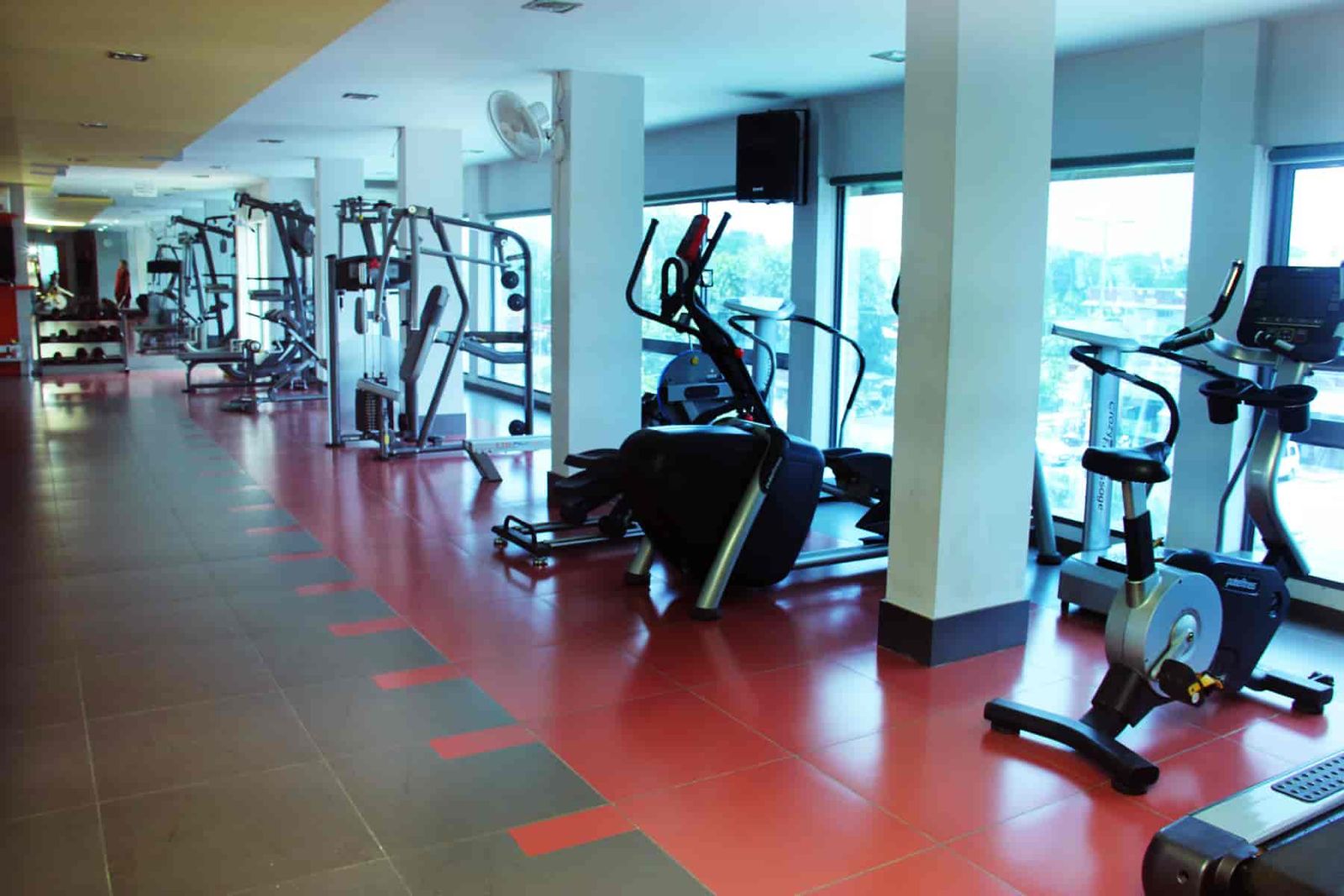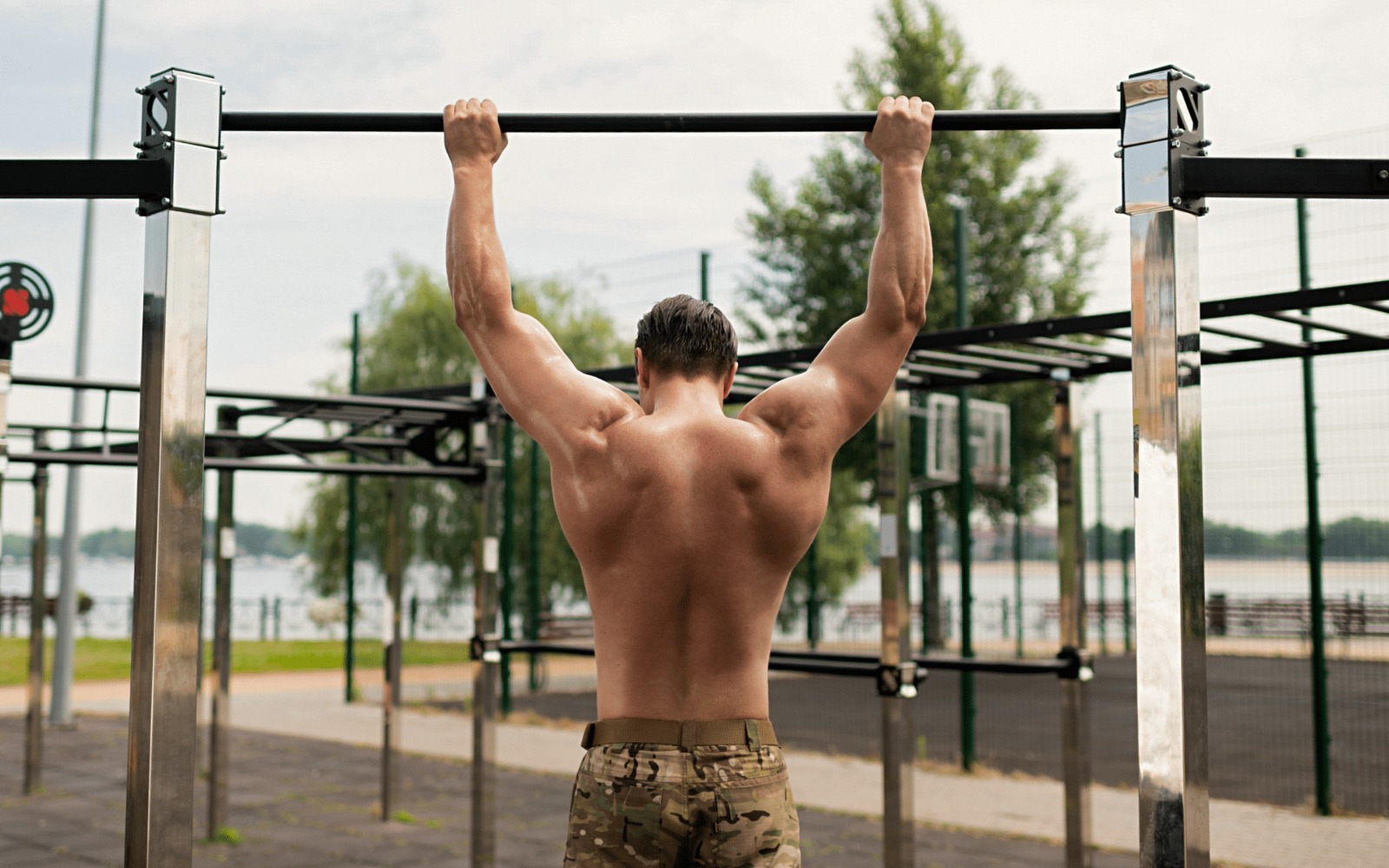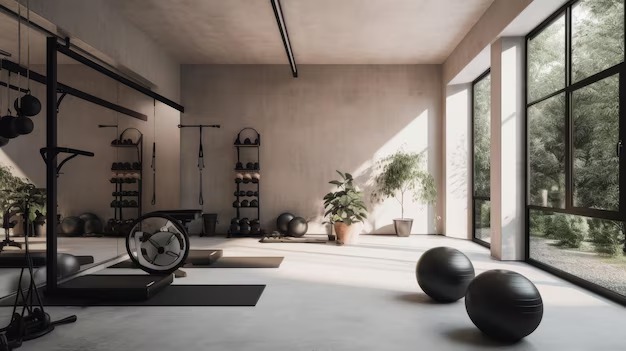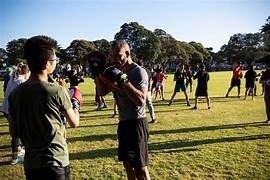
Urban Fitness Adventures: Turning Cities into Gyms.
"Discover how urban environments can transform into dynamic fitness arenas, where streets, parks, staircases, and rooftops become versatile gyms. Urban fitness adventures blend creativity, physical activity, and exploration, offering accessible, engaging, and sustainable ways to improve strength, endurance, and mental well-being, while fostering community connections and encouraging a deeper appreciation of the city as a playground for health and adventure."
💪 Fitness Guru
60 min read · 22, Oct 2025

Urban Fitness Adventures: Turning Cities into Gyms
In an era when urban lifestyles are often synonymous with long hours of desk work, endless commutes, and screen time, staying fit can seem like a daily battle. Yet, hidden within the concrete jungles of our cities lies an untapped playground — one that offers endless opportunities for physical activity, creativity, and exploration. “Urban Fitness Adventures” is a growing global movement that reimagines cities not as barriers to fitness, but as living, breathing gyms. From parkour across park benches to stair sprints in high-rises, and cycling through bustling streets to yoga in rooftop gardens — urban fitness encourages individuals to rediscover their environment as a space for movement, connection, and health.
This comprehensive article explores how cities can become personal fitness arenas, the psychological and physical benefits of embracing urban environments for exercise, examples from around the world, and practical strategies for creating your own urban workout adventure.
The Rise of Urban Fitness Culture
Fitness has traditionally been associated with gyms, fitness studios, or outdoor sports facilities. However, as urban populations expand and lifestyles evolve, accessibility, time constraints, and financial limitations have led to a shift toward more flexible, community-oriented, and environment-based fitness routines. Urban fitness emerged as a creative response — an innovative way to merge daily living with physical movement.
In the early 2000s, trends such as parkour, street workouts, and urban running began redefining how people interacted with their cities. What was once considered vandalism or reckless behavior evolved into a legitimate fitness subculture — supported by city councils, fitness influencers, and public health organizations. Cities like London, New York, Tokyo, and Singapore started integrating outdoor gyms, community workout zones, and green trails, turning urban landscapes into inclusive fitness ecosystems.
Modern urban fitness is no longer just about working out — it’s about exploration, sustainability, and empowerment. It invites people to see their surroundings not as static architecture but as an evolving terrain for both body and mind.
Benefits of Urban Fitness Adventures
- Accessibility and Affordability:
- You don’t need a gym membership or fancy equipment. A staircase, park, or even a quiet street can be transformed into a fitness zone. This democratization of exercise means anyone can participate, regardless of income or location.
- Improved Mental Health:
- Urban workouts encourage mindfulness and connection with one’s surroundings. Exploring city spaces fosters creativity and spontaneity, reducing monotony and boosting motivation. Moreover, outdoor light exposure combats seasonal affective disorders and enhances mood.
- Sustainability and Environmental Awareness:
- Walking or cycling instead of driving to work contributes to reducing your carbon footprint. Urban fitness blends sustainability with self-care, allowing citizens to live greener, healthier lives.
- Community Building:
- Urban fitness often involves social elements — group runs, community yoga, or cycling clubs. It strengthens bonds between people and promotes a sense of belonging within the urban ecosystem.
- Functional Strength and Agility:
- Unlike static gym workouts, urban adventures involve natural, dynamic movements — climbing stairs, balancing on rails, or jumping obstacles. These functional activities improve coordination, endurance, and flexibility.
Transforming the City into Your Gym
Turning the city into your gym starts with a shift in perception. Once you start viewing everyday spaces as workout opportunities, your environment becomes a versatile training zone. Here’s how to make it happen:
1. The Commute Workout
Your daily commute can double as an exercise session. Walk or cycle instead of taking the car or public transport. Get off a stop earlier and jog the remaining distance. Use park benches for tricep dips or stairs for interval sprints.
2. The Stairway Challenge
Office buildings, subway stations, or apartment complexes often have long staircases — the perfect setting for cardio and lower-body strength training. Climb multiple flights, do lateral hops, or take two steps at a time for extra intensity.
3. Park-Based Workouts
Parks are the heart of urban fitness. Utilize benches for push-ups, picnic tables for step-ups, and open lawns for yoga or HIIT circuits. Even small green patches offer a break from concrete monotony and a breath of fresh air.
4. Street Circuits
Design your own “street circuit.” Choose landmarks within walking distance and alternate between jogging, sprinting, and bodyweight exercises at each stop. For instance, do squats at a bus stop, push-ups near a wall, and lunges on the sidewalk.
5. Rooftop Training
Many urban buildings have accessible rooftops that provide scenic views and a peaceful environment. Practice yoga, skipping, or shadowboxing under the open sky. The elevation also makes for a great wind-resistance workout.
6. Urban Cycling and Skating
Bike-sharing programs have revolutionized urban commuting. Use city cycling lanes for endurance training or skate through wide boulevards. Not only does this boost cardiovascular health, but it also helps you discover hidden corners of your city.
7. Playground Workouts
Playgrounds aren’t just for children — they’re full of functional fitness equipment. Monkey bars, swings, and slides can be used for pull-ups, core work, and balance exercises. It’s also a fun, nostalgic way to train.
8. Waterfront and Bridge Runs
If your city has a riverfront, canal, or seaside promenade, use it for long-distance runs or meditative walks. Bridges offer excellent inclines for sprint training, while waterfront breezes add a refreshing element to cardio.
The Psychological Dimension: Rediscovering Joy in Movement
Urban fitness is not merely a physical pursuit; it’s an emotional and psychological awakening. Many people grow disconnected from their surroundings — commuting from home to work and back, rarely observing the city’s rhythm. Urban workouts rekindle that lost relationship.
When you sprint down a familiar street or stretch in a city park, you start seeing your environment differently — not as a source of stress but as a source of possibility. Each building, corner, or tree becomes part of your personal fitness map. This sense of ownership and belonging enhances motivation and self-discipline, making workouts feel less like chores and more like adventures.
Urban fitness also builds mental resilience. Navigating unpredictable terrains, adjusting to weather conditions, and interacting with other city dwellers cultivates adaptability and confidence. You’re not just training your body — you’re training your mind to thrive in dynamic, real-world environments.
Urban Fitness Movements Around the World
Across the globe, cities have embraced this movement in creative ways:
- London, UK: The “London Midnight Runners” host running events with built-in exercise stations and music. They transform iconic landmarks into dynamic workout spots.
- New York City, USA: Central Park and the Brooklyn Bridge have become hubs for outdoor fitness enthusiasts. The city also supports “Street Workout Parks” equipped with bars and benches.
- Tokyo, Japan: Compact spaces are used innovatively with rooftop yoga, escalator climbs, and even “train station sprints.”
- Paris, France: The “Freeletics” movement popularized high-intensity, no-equipment workouts performed in parks and plazas.
- Singapore: The city’s “Park Connector Network” allows cyclists and joggers to navigate urban and green spaces seamlessly.
- Mumbai, India: Marine Drive and Bandstand have turned into open-air gyms, with citizens walking, jogging, and performing calisthenics at dawn.
These examples show how cities worldwide are adapting their infrastructure to promote healthier, more active lifestyles — blending culture, fitness, and community spirit.
Technology’s Role in Urban Fitness
Technology has amplified the reach and engagement of urban fitness adventures. GPS-based apps like Strava, Nike Run Club, and Komoot allow users to map routes, track progress, and share challenges with global communities. Social media fitness groups inspire collaboration, while augmented reality (AR) fitness games like “Zombies, Run!” make city running thrilling and interactive.
Moreover, smartwatches, fitness trackers, and wearable devices now measure everything from heart rate to elevation gain — giving users real-time insights into their workouts. This fusion of fitness and tech has turned ordinary city routes into personalized, data-driven fitness experiences.
Safety and Practical Tips for Urban Fitness
While city workouts are exciting, safety should always come first. Here are a few guidelines:
- Plan Your Route: Choose well-lit, safe, and familiar areas. Avoid deserted alleys or unsafe zones.
- Be Visible: Wear reflective gear, especially if you’re training early morning or at night.
- Hydrate and Protect Yourself: Carry water and wear sunblock or rain gear as needed.
- Respect the Space: Avoid blocking pedestrian pathways or damaging public property.
- Warm Up and Cool Down: Urban terrain can be unpredictable — proper stretching helps prevent injuries.
- Listen to Your Body: City workouts can be demanding due to uneven surfaces or pollution. Take breaks and train smart.
Creating a Sustainable Urban Fitness Routine
Building a long-term routine requires balance and creativity:
- Set Landmarks as Goals: Pick a monument, park, or bridge as your target point and create routes around it.
- Mix It Up: Alternate between running, cycling, stair workouts, and yoga to engage different muscle groups.
- Join Communities: Participate in group runs or city boot camps for motivation.
- Track Progress: Use fitness apps to set challenges and monitor consistency.
- Celebrate Exploration: Discover a new neighborhood each week — fitness becomes an urban adventure.
Urban fitness adventures are rapidly transforming the way people perceive cities, shifting the mindset from viewing urban environments as concrete jungles that confine movement and encourage sedentary lifestyles to vibrant, dynamic playgrounds where every street, staircase, rooftop, and park can serve as a personal gym, offering infinite opportunities for exercise, exploration, and mental rejuvenation, as urban dwellers increasingly recognize that fitness does not need to be confined to traditional gyms or expensive fitness studios, and that the city itself, with all its diverse architecture, public spaces, and hidden corners, can provide an abundance of resources for creative and functional workouts, where even a simple staircase becomes a tool for cardiovascular training and leg strengthening, a park bench can serve as the perfect station for tricep dips, step-ups, or inclined push-ups, and wide sidewalks or promenades transform into circuits for jogging, sprints, or agility drills, and this approach not only addresses the challenges of accessibility and affordability by eliminating the need for costly equipment or memberships but also encourages a more holistic and integrative form of fitness that combines endurance, strength, flexibility, balance, and coordination, all while fostering a deeper connection with one’s environment and cultivating mindfulness as individuals become aware of the textures, slopes, obstacles, and rhythms of the spaces they traverse, and urban fitness also has significant psychological benefits, as moving through diverse and unpredictable terrains requires problem-solving, focus, and adaptability, promoting mental resilience and reducing stress, anxiety, and monotony that often accompany conventional exercise routines, and beyond the physical and mental advantages, urban fitness fosters community engagement by encouraging social interactions and collaborative activities such as group runs, outdoor yoga sessions, rooftop boot camps, or neighborhood cycling clubs, which enhance motivation, accountability, and the sense of belonging, and these communal experiences often highlight the city itself as a living laboratory for fitness experimentation, with landmarks, bridges, waterways, plazas, and street corners doubling as waypoints, obstacle courses, and adventure tracks that challenge participants to innovate and explore, while technology amplifies the potential of urban fitness, with GPS mapping apps, wearable trackers, and fitness social platforms enabling individuals to plot routes, monitor progress, compete with peers, and gamify their workouts, adding a level of engagement and data-driven feedback that can help optimize training intensity, duration, and variety, and the flexibility of urban fitness allows it to cater to diverse needs and schedules, as early-morning runs along riverfronts, mid-day rooftop yoga, evening park circuits, or weekend street adventures can seamlessly integrate into daily life, offering an adaptable alternative to rigid gym hours and commuting constraints, and the movement itself is inherently functional and practical, mirroring real-life challenges such as climbing stairs, jumping obstacles, balancing on uneven surfaces, and navigating crowded spaces, thereby improving core stability, coordination, and real-world strength, while also promoting cardiovascular health and endurance, and this type of training inherently combines elements of play, exploration, and creativity, which can help sustain long-term adherence by making exercise enjoyable rather than a monotonous obligation, and worldwide examples demonstrate the global appeal of urban fitness, from London’s outdoor running clubs and street workout parks to New York City’s Central Park circuits and Brooklyn rooftop boot camps, from Tokyo’s innovative use of compact urban spaces for stairs, escalator climbs, and public exercise zones to Singapore’s extensive park connector networks that merge greenery with commuting routes, illustrating how cities can adapt infrastructure to support a culture of health and movement, and even in highly crowded metropolises such as Mumbai, where Marine Drive and Bandstand serve as open-air gyms, citizens have found ways to integrate calisthenics, jogging, and yoga into their urban experience, proving that urban fitness transcends socioeconomic and geographic boundaries, democratizing access to exercise while simultaneously transforming the cityscape into an interactive, evolving environment for personal growth, wellness, and discovery, and furthermore, urban fitness encourages environmental mindfulness by promoting sustainable modes of transport such as walking, cycling, and skateboarding, reducing reliance on cars and lowering carbon footprints, which aligns personal health with planetary well-being, creating a virtuous cycle where individuals cultivate physical and mental resilience while actively participating in the creation of greener, more walkable, and livable cities, and to safely embrace urban fitness, practitioners are advised to plan routes, choose well-lit and secure areas, maintain visibility with reflective gear, stay hydrated, and adapt movements to suit terrain and environmental conditions, ensuring a balance between challenge and safety, while also respecting shared public spaces to foster a positive relationship with fellow citizens, and urban fitness routines can be made sustainable and engaging by setting specific goals tied to city landmarks, mixing various types of exercises to prevent monotony, joining community groups for support and accountability, and celebrating the exploration of new neighborhoods as both an adventure and a training opportunity, thus merging urban discovery with physical conditioning, all of which highlights the transformative potential of urban fitness adventures to turn the city itself into a boundless, multifunctional gym that nurtures health, creativity, mental clarity, social interaction, and environmental consciousness, demonstrating that fitness is not limited to equipment, memberships, or traditional facilities, but is instead an immersive, experiential, and highly adaptable practice that can seamlessly integrate into everyday life, encourage continuous personal growth, and redefine the way we inhabit and interact with urban environments, ultimately proving that with curiosity, creativity, and commitment, anyone can turn the streets, parks, rooftops, and alleys of their city into a dynamic arena for holistic wellness and lifelong fitness adventures.
Urban fitness adventures are revolutionizing the way we think about exercise, transforming cities from static, concrete landscapes into dynamic playgrounds where every street, staircase, park, rooftop, and open space can become a personal gym, allowing urban dwellers to seamlessly integrate physical activity into their daily routines while exploring the hidden potential of their surroundings, and this approach is particularly important in modern times, when sedentary lifestyles, long hours of desk work, and digital distractions have contributed to widespread physical inactivity and mental fatigue, prompting the need for innovative fitness solutions that do not require expensive memberships, specialized equipment, or dedicated time blocks, as urban fitness embraces the philosophy that movement can happen anywhere and at any time, whether it is sprinting up a flight of stairs in an office building, performing push-ups and tricep dips on a park bench, or balancing on curbs and railings while navigating city streets, and these exercises, often referred to as functional fitness, train the body to move in real-world scenarios, improving strength, agility, endurance, coordination, and flexibility simultaneously, while also challenging the mind to engage with constantly changing environments and spatial awareness, and the psychological benefits of urban fitness are significant, as navigating diverse urban terrain, exploring new routes, and engaging in spontaneous workouts can reduce stress, boost mood, and enhance cognitive function, promoting mental resilience and increasing overall well-being, and another major advantage of urban fitness is accessibility, as nearly everyone lives in or near a city and can utilize existing infrastructure such as parks, sidewalks, bridges, staircases, and playgrounds to create a personalized exercise routine, making fitness more inclusive and democratized than traditional gyms, while simultaneously fostering environmental awareness and sustainability, since walking, running, cycling, or skating as part of an urban workout reduces reliance on motor vehicles, lowers carbon emissions, and encourages eco-friendly commuting, all of which align personal health goals with broader ecological benefits, and in addition to physical and environmental advantages, urban fitness often cultivates community engagement and social interaction, as group runs, rooftop yoga classes, cycling clubs, and street workout meetups bring people together, enhancing motivation, accountability, and a sense of belonging, and these social dynamics can also serve as a platform for exchanging fitness knowledge, sharing routes, and encouraging newcomers to embrace active lifestyles, thereby strengthening the social fabric of the city while promoting health, and technology has further amplified urban fitness opportunities, with GPS-enabled apps, wearable trackers, augmented reality games, and online social communities providing tools for mapping routes, monitoring performance, setting challenges, and connecting with fellow urban explorers worldwide, turning exercise into a measurable, gamified, and highly engaging experience that fosters sustained commitment, while also offering safety features such as route tracking and emergency alerts, and the versatility of urban fitness allows it to accommodate a wide range of preferences, fitness levels, and schedules, as early-morning runs along riverfronts, midday rooftop circuits, evening park workouts, or weekend street adventures can all be integrated into busy urban lifestyles, providing flexibility and reducing barriers to consistent exercise, and by combining cardiovascular activity, strength training, flexibility work, and functional movement, urban fitness creates a well-rounded regimen that improves overall health, supports injury prevention, and enhances physical performance in everyday life, while also stimulating creativity and problem-solving skills as participants navigate stairs, curbs, benches, uneven pavements, and other urban obstacles, adapting their movements to the environment and challenging themselves in ways that static gym equipment cannot replicate, and worldwide examples demonstrate the popularity and efficacy of urban fitness, from London’s street workout parks and organized night runs, to New York City’s Central Park circuits and rooftop boot camps, from Tokyo’s innovative utilization of compact urban spaces for stair climbing, escalator sprints, and micro-gym exercises, to Singapore’s park connector network that combines jogging and cycling paths with natural greenery, illustrating how urban planning and community initiatives can support healthy lifestyles, while even densely populated cities like Mumbai have creatively transformed seafront promenades and public parks into open-air gyms, proving that the principles of urban fitness can be adapted to any environment, regardless of population density or available space, and urban fitness also encourages a playful and adventurous approach to exercise, turning the city itself into a space for discovery, exploration, and personal challenge, where participants can set landmarks as goals, design street circuits, and create rooftop or stairway challenges, thereby merging the excitement of urban exploration with the benefits of structured physical activity, and by doing so, individuals cultivate a sense of accomplishment, empowerment, and connection to their surroundings, while simultaneously improving cardiovascular health, muscular endurance, balance, agility, and overall functional fitness, and for those who wish to practice urban fitness safely, considerations such as route planning, adequate lighting, visibility through reflective gear, proper hydration, stretching, and situational awareness are critical, ensuring that workouts remain challenging yet risk-conscious, while also respecting public spaces and community norms, and the long-term benefits of integrating urban fitness into daily life are profound, as individuals not only enhance their physical and mental well-being, but also develop a sustainable, adaptive, and enjoyable lifestyle that encourages consistent activity, strengthens community ties, fosters environmental consciousness, and allows them to see their city through a new lens of opportunity, creativity, and empowerment, making urban fitness adventures an essential approach for modern living, and ultimately, the concept emphasizes that fitness is not restricted to gym walls, specialized equipment, or rigid schedules, but is a flexible, immersive, and holistic practice that transforms ordinary city environments into dynamic arenas for health, discovery, social interaction, and lifelong movement, demonstrating that with curiosity, initiative, and awareness, anyone can turn the streets, parks, staircases, and rooftops of their urban surroundings into a thriving, multifunctional gym that supports physical strength, mental clarity, emotional resilience, and a deeper appreciation of the city itself, bridging the gap between daily life and active living, and creating a lifestyle where movement, exploration, and wellness coexist seamlessly in the spaces we inhabit every day.
Conclusion
Urban Fitness Adventures redefine what it means to stay active in modern life. They break down the barriers of traditional fitness and encourage a holistic approach that combines movement, mindfulness, and exploration. By transforming cities into open-air gyms, individuals can reclaim their health, connect with their environment, and foster community spirit — all while saving time and money.
The beauty of urban fitness lies in its simplicity. A city staircase becomes your treadmill, a park bench your weight station, and every street corner your next milestone. As more cities embrace pedestrian-friendly designs and wellness initiatives, the future of urban fitness looks both dynamic and inclusive.
In essence, your city is not just a place to live — it’s a place to move, breathe, and thrive.
Q&A Section
Q1: What exactly is “Urban Fitness”?
Ans: Urban Fitness is a movement that encourages people to use their city’s natural and built environments — such as parks, stairs, rooftops, and streets — as workout spaces instead of traditional gyms.
Q2: How can I start urban fitness if I’m a beginner?
Ans: Start small — walk or cycle to work, use stairs instead of elevators, and explore nearby parks. Gradually integrate bodyweight exercises like push-ups, squats, and lunges into your routine.
Q3: Do I need special equipment for urban workouts?
Ans: No. Urban fitness primarily relies on bodyweight exercises and the city’s existing structures. However, resistance bands, jump ropes, or wearable fitness trackers can enhance your experience.
Q4: Is it safe to work out in public areas?
Ans: Yes, if you follow safety precautions — choose safe, well-lit areas, stay visible, and respect public property. Always be aware of your surroundings.
Q5: Can urban fitness replace the gym?
Ans: It can for many people. While gyms offer specialized equipment, urban fitness provides functional strength, cardiovascular endurance, and flexibility through real-world movements.
Similar Articles
Find more relatable content in similar Articles

Calisthenics Mastery: Control, Balance, and Body Awareness...
Calisthenics is the art of mas.. Read More

Minimalist Fitness Gear: Do You Really Need a Gym?..
In an era dominated by high-te.. Read More

Urban Fitness Adventures: Turning Cities into Gyms...
"Discover how urban environmen.. Read More

Tribal Fitness: Learning from Indigenous Movement Practices...
Long before modern gyms and fi.. Read More
© 2024 Copyrights by rFitness. All Rights Reserved.